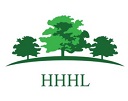



from Edlin HL, Backhouse GW, Ballance GF, Race RM, Perrin RMS & Rainbird Clarke R. East Anglian Forests. Edlin HL (Ed.). HMSO, London, 1972.
Failure to establish oak and beech successfully was due to combination of adverse climatic conditions and serious grazing by hares and roe deer.
In the early years the Pine shoot moth (Evetria buolina) caused serious damage… Weevils and beetles of various species have given trouble in the past… Of fungus diseases… Fomes annosus… (comment: were these brought in by plantation or previously established/indigenous?)
Within the forest red squirrels are common and indeed it is one of the major strongholds in the South of England… Grey squirrels have penetrated borders to the South.
Three species of deer have lived in the forest for many years; red, roe and fallow. Recently a fourth has appeared, the muntjac
… the North Norfolk areas … fell heir to large areas of devastated scrub with a proportion of young poles of various hardwoods. Birch, and to a lesser extent ash, elm, alder and oak with some beech and sweet chestnut, occurred sporadically in pole sizes. Many stems originated from the coppice which existed under a previous stand of large timber trees. … The ground vegetation is also varied. ..brambles and briars with mixed grasses.. ..more open tracts carry a crop of bracken and heather.. in association with grasses, among which are Molina coerlea and Holcus mollis predominate.
Breckland heaths and forests: continental type of climate.. and 'steppe' element. Several coast plants such as sand sedge (Carex arenaria). Formerly an area of extensive heaths where sheep and rabbits grazed.. cropped turf so closely as to prevent most tree growth. With the afforestation of Thetford Chase rarer species.. diminished.. now only found in Nature Reserves. In summer, roadside banks and tracks.. follows a long list of plant (including aliens and now extinct)
Wet heaths and bogs: there follows a list of plants
(comment: there is no mention of river valleys and those areas marked 'Liable to flood' on old maps within the Brecks but perhaps these have/had similar flora?) Woodland plants: there follows a list of plants
Hedgehogs, both common and pygmy shrews as well as water shrews in the river/stream valleys.. moles.. bats, several species. Rabbits, hares. Bank and field voles, long tailed field mouse, yellow necked field mouse - flourishes in many woods in Suffolk. Water voles, dormice - Stour valley, harvest mice. Red squirrels
Coypu (escaped/introduced pest). Foxes, badgers - rare in Norfolk, not quite so rare in Suffolk. Otters, stoats, weasels. Polecats and pine martens now extinct. Deer, red and roe, formerly indigenous to region, escaped park deer, muntjac.
Many bird species listed. Birds typical of open Brecks have become scarcer, wheatears, stonechat, whinchat, woodlark. Redshank and ringed plover decreased numbers. Breckland was the last home of the great bustard, some 200-300 years ago they roamed in flocks, became extinct around 1839.
Reptiles and amphibians: most represented, including edible frog. Fish: spotted burbot no longer found in Breckland rivers. Insects: Viper's Bugloss moth (caterpillars feed on Spanish catchfly) and Grey carpet moth (feeds on treacle mustard and flixweed) found only in Breckland. Spotted Sulphur, Tawny Wave and Diamond Spot Pearl moths almost wholly confined to Breckland. Several more are mentioned, more common in the Brecks than in other regions. Butterflies, beetles and others mentioned.
Mesolithic thorough neolithic, mixed woodland, red and roe deer, aurochs, wild boar. Soils soon exhausted followed by grazing discouraged regeneration of woodlands.
Evidence of sheep rearing and domestic woollen industry in Roman times.